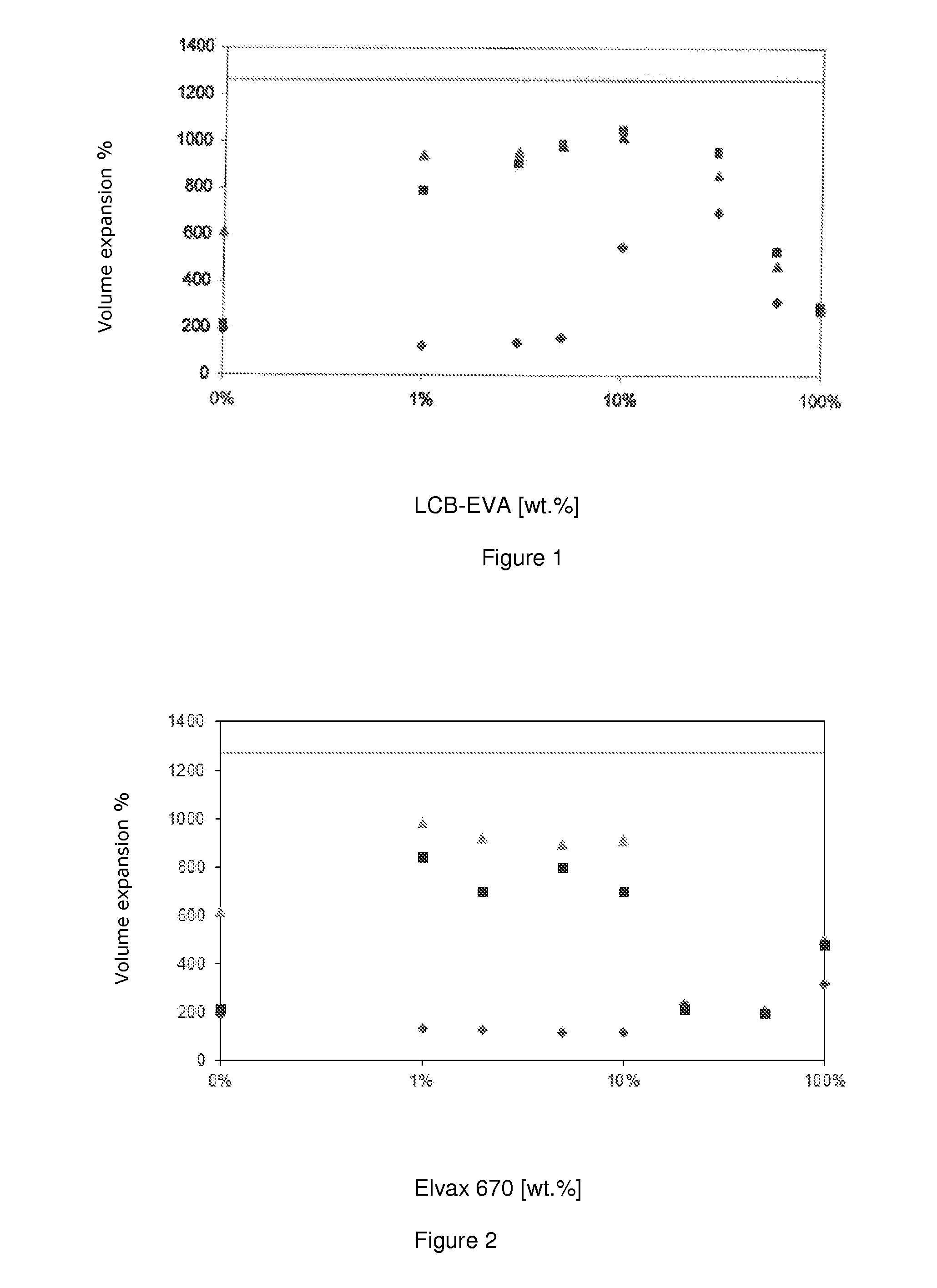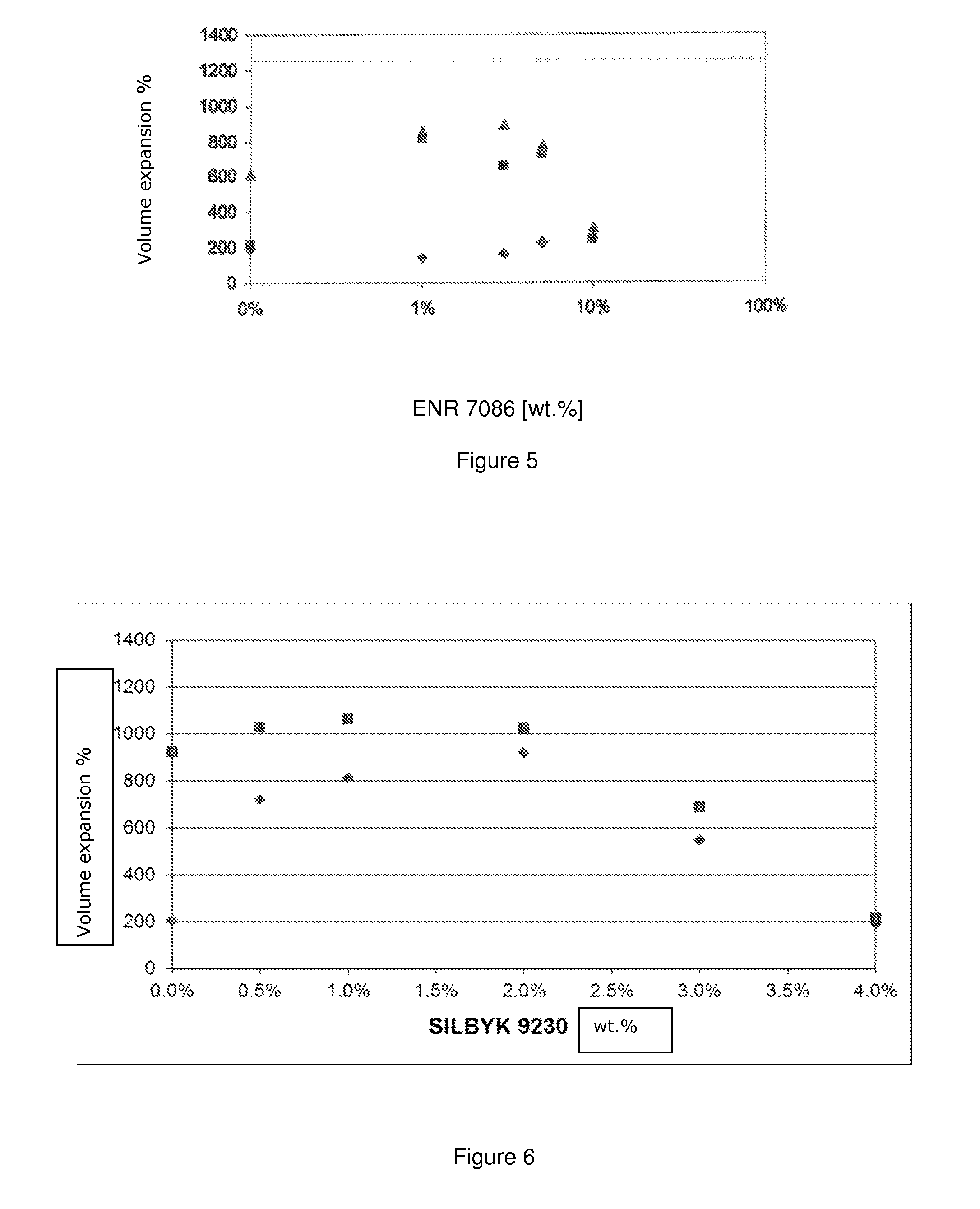Thermoplastic foaming agent
- Summary
- Abstract
- Description
- Claims
- Application Information
AI Technical Summary
Benefits of technology
Problems solved by technology
Method used
Image
Examples
examples 1 to 5
[0076]Formulations based on Elvax® 265A were prepared as matrix material. The polymer was used alone or in a mixture with a modifying agent selected from Elvax® 670, LCB-EVA, LD 380 BA, LD 252 and ENR 7086.01. To ensure comparability, Elvax® 265A and optionally modifying agents in the weight ratios shown in the Figures were always used for the formulation in an overall fraction of 93.5 parts by weight and Unicell DL75N was used as the blowing agent in a fraction of 6.5 parts by weight.
[0077]The formulation was mixed in a Brabender high-shear mixer at 40 rpm, wherein first the matrix polymer, followed by the modifying agent, and then the blowing agent were introduced. The complete formulation was mixed for 2 min at melt temperatures of less than 105° C. to avoid premature foaming.
[0078]Disk-shaped samples (thickness 2 mm, diameter 25 mm) made from the formulations obtained were placed on silicone-coated paper (carrier paper) and foamed in a convection oven at 191° C. for 5 and 12 min...
PUM
| Property | Measurement | Unit |
|---|---|---|
| Temperature | aaaaa | aaaaa |
| Weight | aaaaa | aaaaa |
| Fraction | aaaaa | aaaaa |
Abstract
Description
Claims
Application Information
 Login to view more
Login to view more - R&D Engineer
- R&D Manager
- IP Professional
- Industry Leading Data Capabilities
- Powerful AI technology
- Patent DNA Extraction
Browse by: Latest US Patents, China's latest patents, Technical Efficacy Thesaurus, Application Domain, Technology Topic.
© 2024 PatSnap. All rights reserved.Legal|Privacy policy|Modern Slavery Act Transparency Statement|Sitemap



